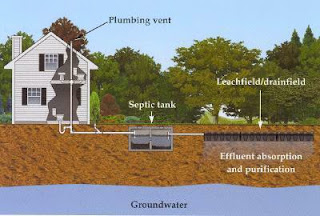PLANNING for your NEW HOME and SEPTIC SYSTEM

You and your spouse just bought some land. Both of you are so excited about building and looking at floor plans. You are looking at different flooring and bathroom tiles, while your husband is dreaming about his new shop/outbuilding with built in man-cave. You find yourself a builder and that’s it! Right? Well, sort of…. Now I know it isn’t the most exciting thing to consider, but one of the most expensive items in your house when building in the country is your septic system. You will spend somewhere between $12,000-15,000 on it depending on the number of bedrooms in the house. I’m no mathematician, but I doubt you’re spending that kind of money on other appliances. If you’re going to be writing that big of a check, don’t you think it would be wise to make sure you give this “appliance” your attention? “What?!” you ask. “You want me to be more concerned about my wastewater than my flooring and tile?” Yes, yes I do. But not because I don’t want you to en


